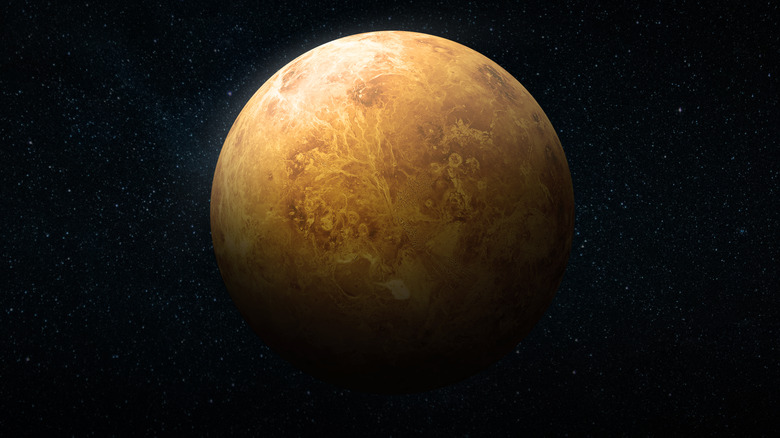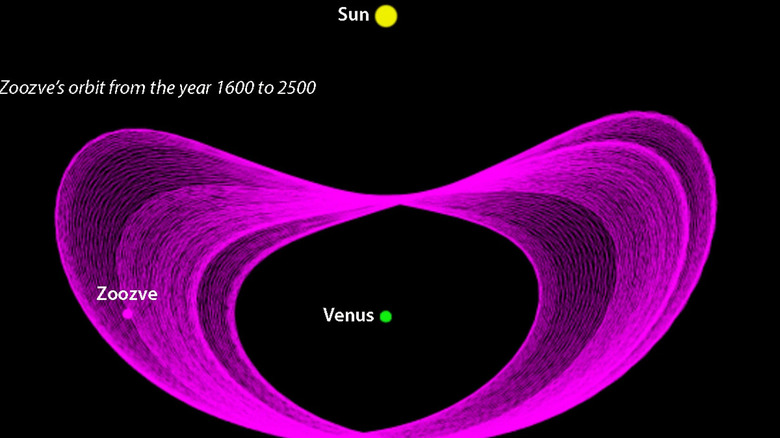Exploring Zoozve: A Closer Look At Venus's Quasi-Moon
You might have heard recently about a fun newly named object in the solar system: a quasi-moon of Venus called Zoozve. Venus doesn't have any moons, but it does have this one body, which looks like a moon but isn't. If you've never heard of a quasi-moon, then that's because they are very rare. This kind of object had been predicted to exist, but according to The Planetary Society, only a few of them have been found in our solar system.
A moon is an object which orbits a planet and is bound to that planet by gravity, like Earth's moon or the many objects orbiting Jupiter or Saturn. However, occasionally an object can end up appearing to orbit a planet but not actually be gravitationally bound to it. That makes it a quasi-moon.
In the case of Zoozve, it is an asteroid of small size (around 230 meters across) which has a complicated orbital path looping around both Venus and the Sun. Technically the object is orbiting the Sun, making it a type of object called a near-Earth asteroid because it crosses Earth's orbit. But it appears to be orbiting Venus in a wing-shaped orbit, which is why it is designated as a quasi-moon of Venus.
Zoozve is neat for its novelty, but it's famous for another reason — and that's because of its unusual name, which it got through a complicated process that began with a mistake by an illustrator of child's posters.
How Zoozve got its name
The delightful story is told on a January 2004 episode of Radiolab, the well-known podcast about science and society. Radiolab presenter Latif Nasser was inspired by a poster that hung over the crib of their two-year-old child, which showed an object next to Venus called Zoozve. Nasser thought this was odd, as he had never heard of a moon of Venus, so he called up a friend who works for NASA — and they hadn't heard of it either.
Nasser got in touch with the artist of the map of the solar system, an illustrator called Alex Foster. "Basically, I don't know about this stuff," Foster said on the podcast. "I wanted to make a solar system map, so I looked online and did a bit of research."
Foster scribbled down some notes based on what he found on the internet — something we've surely all done — and came back to these notes to draw his map. But Nassar and his NASA friend, Liz Landau, still couldn't work out what online source the name Zoozve could have come from. They couldn't find it anywhere online.
"But then I sort of looked away for a minute and I looked at it again, and I was like, what if it's not Z-O-O-Z, what if it's 2002? And so I just googled "2002-VE," and I found this object, which I did not know existed before," said Liz Landau.
They concluded that Foster must have scribbled down the information and then misread it, and a legend was born.
Zoozve becomes official
As part of the Radiolab podcast, the hosts contacted the original discoverer of 2002-VE, Brian Skiff. Skiff had first observed the object during the 1990s while working for a NASA project called the Lowell Observatory Near-Earth Object Search, and it was forgotten about for some time before it was then studied in more depth by a team of astronomers lead by Seppo Mikkola. This team published an article about the objects in Monthly Notices of the Royal Astronomical Society in 2004, describing the orbital mechanics of the object and referring to its designation, 2002 VE68.
The Radiolab team explained the mix-up to Skiff, and as the original discoverer, he had the choice to officially name the object. He found the occurrence amusing enough to submit an application to name the object to the International Astronomical Union, or IAU, which is in charge of officially naming objects.
In early 2024, the IAU officially announced that the object would be called Zoozve, describing Foster's mistake as "coining an odd and memorable moniker," and describing the object as "the first-identified quasi-satellite of a major planet (Venus)."
This charming story about an object getting its name more than 20 years after its first discovery due to a mix up involving a child's poster captured the imagination of many, and the legend of Zoozve made headlines around the world.

